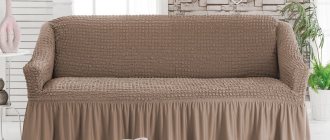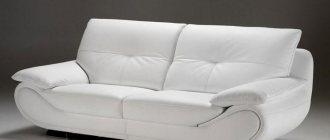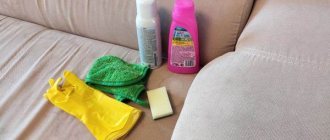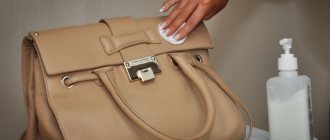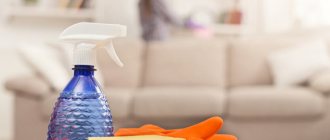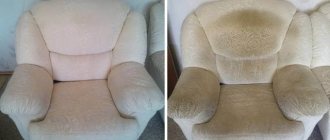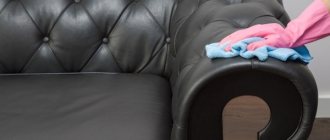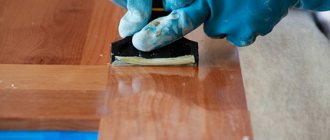Such an unpleasant little thing as stains appearing on the sofa can ruin your mood for a long time, but don’t panic, because they can be removed at home. Nowadays there is upholstered furniture in almost every home, so every housewife has at least once encountered the problem of stains. Not everyone can afford the services of cleaning companies. Therefore, let’s try to figure out how to get rid of various stains on the sofa yourself.
You can easily try to remove a fresh stain with warm water and two tablespoons of soda ash. For such cases, there should always be brushes in the house. A regular dishwashing sponge also works well to remove stains. Soda ash can be purchased at any hardware store at a low price, and its effectiveness is quite high.
For preventative purposes, it is better to regularly clean the surface of the sofa to avoid stains that are difficult to remove. Over time, they eat into the fabric and become much more difficult to remove. Therefore, it is better to start dealing with stains immediately after they appear.
General rules and recommendations
Different types of textiles and the origin of stains require a special approach to cleaning. However, there are several uniform rules, the observance of which significantly improves the result. Namely:
- Vacuuming upholstered furniture before removing stains using a turbo brush or a special attachment. This will remove dust, small debris and wool.
- Testing the selected product before use. To do this, the drug is applied to an area of the upholstery hidden from view.
- Avoiding over-hydration. Cleaning the sofa with soap foam, rather than the solution itself, will help prevent the occurrence of dampness, mustiness and mold.
- Using wet wipes that can effectively remove small stains from textile upholstery.
- Timely removal of stains, preventing the penetration of dirt into the fiber structure.
- High-quality drying of furniture after cleaning (preferably in a natural way). In damp and cold weather, it is advisable to use a hairdryer for this purpose.
- Use only non-aggressive industrial preparations, since exposure of upholstery material to chemicals most often leads to its damage.
Pollution prevention
To ensure that the sofa does not lose its presentation over time, you need to follow a number of recommendations that extend its service life:
- you should choose a sofa with an upholstery material that is easy to clean from various unwanted elements;
- buy capes and bedspreads for furniture;
- during the meal you need to be as careful as possible;
- monitor the general condition and take preventive measures in a timely manner (knock out dust, remove traces of dirt from covers, vacuum the sofa).
Despite compliance with all these measures, the sofa may be damaged if children and guests of the apartment or house handle it carelessly. Therefore, it is necessary to have information about ways to remove stains from upholstery.
It is advisable to use covers on the sofa
Useless means
It is not recommended to use several products to clean upholstery material:
- water without auxiliary components - will remove only fresh contaminants;
- oil-based products will not only not clean the upholstery, but will also leave behind fresh stains;
- kerosene, gasoline - do not help get rid of contaminants, and at the same time give the material an unpleasant odor;
- hydrogen peroxide – can discolor upholstery;
- nail polish remover - has an aggressive effect on the material, washes off the production paint, while absolutely not getting rid of the stain.
Important! The opinion that solvents effectively remove ink stains is wrong - their use will only expand the area of contamination and discolor the fabric.
Unpleasant smell
An unpleasant smell from upholstered furniture can be easily removed with recipes from Chistyuli.
How to wash a sofa from the “aroma”? Special shampoos and deodorants for upholstered furniture work well. True, disinfectants do not remove, but mask the unpleasant aroma. Here are recipes for affordable and effective home remedies for removing odors:
- Human urine, fruit, grape or other fruit or vegetable juice, beer. If the sofa begins to smell bad (for example, urine has gotten on it), treat the problem area with 9% vinegar (2 tablespoons of acid per glass of warm water). Ideally, a vinegar treatment should complete the cleaning of upholstered furniture.
- The smell of cigarettes . Sprinkle baking soda on the surface of upholstered furniture. This banal powder perfectly absorbs the smell of cigarettes, and other aromas too. After a few hours, vacuum up the powder.
- Smell of cat urine . A cat or cat has “improved” the sofa? Did the dog raise its paw? Well, Clean people can handle such problems. Mix hydrogen peroxide, vinegar 9%, soda, warm water. The solution should be concentrated. Life hack: fill a syringe with liquid and inject the needle into the furniture around the perimeter of the stain. And also treat on top.
Vinegar itself has a specific sour aroma that can stay in furniture for a long time. To prevent such a nuisance, add aromatic fabric softener to the cleaning solution.
Removal technique
There are three ways to get rid of stains on your sofa upholstery yourself, such as:
- use of improvised means;
- treatment with a washing vacuum cleaner;
- use of specialized industrial preparations.
The withdrawal process includes several steps:
- Treating the surface of the sofa with a vacuum cleaner, preventing the formation of dirty stains due to dirt and dust accumulated in the structure of the fabric.
- Preparation of the working solution and preparation of all accessories necessary for cleaning. To remove stains, you will need a sponge, a container of clean water, paper towels, cloth napkins, and personal protective equipment.
- Apply cleaning agent to the problem area.
- Waiting (the duration is indicated in the description of the cleaning technology).
- Clean dirt with a sponge or soft brush.
- Completion of the procedure is the removal of residual dirt and cleaning agent. Clean with a vacuum cleaner or a clean, slightly damp cloth.
- Thoroughly dry the cleaned area (naturally or using a hair dryer).
Important! Fabrics with a fleecy surface do not tolerate brushing or excessive mechanical impact during friction. Ignoring this rule causes the pile to roll off, causing a bald spot to form on the upholstery.
How to clean a leather sofa?
At first glance, leather seems to be the easiest material to care for - smooth, lint-free - you only need to occasionally brush off the dust. But it is the leather sofa that often becomes a victim of children’s artistic painting with a felt-tip pen or careless handling with a ballpoint pen.
One way or another, you can remove almost any stain from your skin at home. Let's talk about each separately:
- Ink, felt-tip pen. Fresh dirt can be removed without a trace with a cotton pad soaked in alcohol or cologne. Old drops or lines of bright color are a little less easy to erase, but alcohol should also help.
- Blood. These and other fresh stains can usually be cleaned with a regular damp cloth, so in what follows we will only consider stubborn stains. The blood is cleansed with acid - lemon juice, vinegar. Be sure to wipe in an inconspicuous area before starting to check for safety.
- Gum. The method is simple: put a few ice cubes on top, wait 5-10 minutes and carefully scrape off the frozen gum.
- Zelenka. Diamond green dye, even if just spilled, is almost impossible to clean up. If you are dealing with upholstered furniture made of painted leather, call a professional, because a suitable acetone or solvent will remove the stain along with the upholstery paint.
The photo shows the process of cleaning a leather sofa
Having contaminated the covering with something less durable, try to clean the sofa from stains using the most common kit: a soft rag, soap solution or Vaseline. If they don’t help, try purchasing special cleaning sprays or wet wipes for leather (even suitable for leather shoes or clothes).
Tip: To reduce the need to clean the leather, cover the sofa with a blanket or a nice sheet.
We’ve figured out the theory of cleaning a sofa made of natural or artificial leather, let’s move on to other types of material:
Suede leather. They don’t use natural upholstery, so you can be 99% sure that your suede is of artificial origin. If you are just planning to purchase a suede sofa, choose one that is treated with dirt-repellent impregnation - then any stains will be removed with a clean damp cloth.
Untreated material is more capricious: it cannot be rubbed too hard, wetted abundantly, or washed with aggressive agents. Maximum - soap solution, soft cloth, special brush with rubber bristles. After cleaning, it is advisable to treat the surface with a protective spray each time - it, of course, will not replace the factory coating, but it will also make cleaning easier in the future.
Nubuck. Less capricious than suede (for example, it is almost not afraid of water), but due to the lint on the surface it also does not tolerate rough handling. It is best to use dry cleaning, or use a special spray, foam, or wipes for nubuck.
Active foam works best - apply, wait the time indicated on the package, remove with a clean cloth - usually the dirt is simply absorbed into the foam and the sofa becomes cleaner.
Folk remedies
In addition to industrial preparations, compositions prepared according to folk recipes will help get rid of various contaminants on the upholstery material of the sofa. Their main advantages are availability, low cost and efficiency.
Advice! Before using one or another working solution, it is necessary to thoroughly knock out the sofa, having first thrown a moistened sheet over it. If necessary, repeat the procedure, replacing the fabric with a clean one.
Preparing for cleaning allows you to get rid of dust and small debris.
Do you use folk remedies to clean your sofa upholstery?
Not really
Vodka and laundry soap
In particular, vodka effectively removes dirt from microfiber. While liquid or solid laundry soap allows you to get rid of stains on the surface of any material. The combination of these two components gives excellent results.
The cleaning process includes several steps:
- Prepare a soap solution.
- Beat until thick foam is obtained.
- Apply to a sponge or cloth and wipe the problem area.
- Clean with a soft bristle brush (if the material allows).
Important! Laundry soap 72% eliminates almost all types of contaminants (grease, ink, etc.), which is due to the alkali content in its composition.
Dishwashing liquid
Among non-specialized products, dishwashing liquids and gels show good results in removing stains from upholstery material of upholstered furniture. They contain components that effectively dissolve fat, so such products are actively used to remove stains from chocolate, lipstick and oil.
Processing sequence:
- Dissolve 30 ml of gel in 1 liter of water.
- Beat until thick foam is obtained.
- Apply to the problem area and leave for about 30 minutes.
- After the stain has dissolved, thoroughly rinse off any remaining dirt and working product with clean warm water.
Hydrogen peroxide
The substance is recommended for cleaning white or non-discolorable materials. Peroxide effectively removes stains from wine, fruit drinks, berries, as well as traces of blood. Algorithm of actions:
- Mix water and peroxide in equal parts.
- Apply the working composition to the contaminated areas.
- Leave for 2-3 hours.
- After the required time, wipe the treated surface with a damp cloth or sponge.
Important! Before using hydrogen peroxide, it is necessary to test an inconspicuous area of the sofa.
Iodine
Iodine effectively removes traces of urine. To do this, dissolve the substance in an amount of 15-20 drops in 1 liter of cool water. The prepared solution is used to treat problem areas.
Important! The use of iodine-based products is only permissible for cleaning dark upholstery material. To work with white or light fabrics, it is replaced with lemon juice.
Treating the surface with a solution of potassium permanganate will help eliminate the unpleasant odor of urine.
Salt, glycerin, soap, laundry or liquid
The processing process consists of several manipulations:
- Prepare a semi-liquid mass by combining salt and glycerin.
- Apply the paste to the problem area.
- Leave for 30 minutes.
- Prepare a solution from laundry soap.
- Wash the surface with soap foam applied to the sponge.
- Rinse the upholstery with clean water.
Baking soda
Regular soda powder is used as an effective upholstery care product for upholstered furniture. With its help, the following procedures are performed:
- Dry cleaning - soda is applied to the surface of textiles in order to get rid of various types of dirt and unpleasant odors.
- Giving freshness to furniture upholstery - the powder is diluted in cold water in a ratio of 1 tsp/1 l.
- Removing contaminants - soda powder is mixed with laundry soap shavings or SMS, and then diluted in an aqueous solution of vinegar. The working solution is poured into a spray bottle and sprayed onto the problem area.
- Getting rid of greasy stains - mix baking soda with vinegar and apply to greasy areas of the sofa upholstery. After 30 minutes, cover with a generous layer of baking soda and leave for about 1 hour. After this time, remove the soda with a vacuum cleaner. At the end of the procedure, wipe the surface with a mixture prepared from laundry soap and hydrogen peroxide.
Lemon juice
Lemon juice is an excellent solvent that helps easily remove colored stains and get rid of foreign odors. This remedy is often used as a substitute for vinegar.
Lemon juice with water
Lemon juice diluted with water effectively removes urine, tea, blood, coffee and juice stains. They often replace vinegar when preparing formulations with hydrogen peroxide and baking soda.
Pure lemon juice
Treating the surface of upholstery material with lemon juice not only discolors, but also deodorizes. This method is relevant for getting rid of stains left by water-soluble drinks: tea, juice, red wine, and urine.
Aspirin
An aqueous solution of aspirin is an inexpensive and at the same time effective remedy that helps remove stains of various origins from sofa upholstery. The cleaning procedure includes several manipulations:
- Dissolve 3 aspirin tablets in 1 liter of water at a temperature of 30 °C.
- Moisten the problem area with the resulting solution and leave for 15 minutes.
- Blot dry with a paper towel.
If necessary, the procedure is repeated several times until the contamination is completely eliminated.
Bleaching
The specific smell of a chlorine solution displaces unwanted odors from the surface of the upholstery material. The composition effectively eliminates bacteria - sources of stench. To treat the sofa, use a 0.5% solution of bleach.
The substance is applied to the problem area with a sponge or brush and left for 30 minutes. After the allotted time has passed, the remaining product is washed with water and the upholstery material is thoroughly dried.
Important! The chlorine solution can be replaced with a more modern household chemical, for example, chlorine bleach or Whiteness gel.
As a rule, bleach is used only in cases where other means have not given a positive result, since the specific smell of this substance remains for a long time. When working with bleach, you must use gloves and ensure respiratory protection.
Tar laundry soap
Tar soap is used to remove stains on upholstered furniture, both as an independent substance and as an active component included in the cleaning mixture.
The foam formed from it allows you to get rid of stains of various origins, as well as eliminate greasy conditions. Tar soap shows especially good results in eliminating traces of juices and red wine.
Vinegar
Treating upholstered furniture with vinegar helps get rid of odors from animal sweat and urine. In combination with laundry soap, this substance is used to remove dirt and grime.
The procedure includes several steps:
- Soak a napkin in vinegar and squeeze lightly.
- Apply to the problem area and press firmly to the surface so that the upholstery material and filling can be saturated.
- Repeat the manipulations several times.
- Wipe the treated area with a damp cloth.
- Dry the surface of the sofa thoroughly.
The vinegar smell will completely disappear in about 2-3 days.
Reference! Using vinegar along with baking soda and hydrogen peroxide can help get rid of the stench of cat urine.
Algorithm of actions:
- Dilute vinegar 9% by 1/3.
- Apply generously to the contaminated area.
- Leave to allow the upholstery to dry.
- Cover with a layer of baking soda and sprinkle with hydrogen peroxide purchased at the pharmacy and diluted by half.
- Wait for foam to form and wait 2-3 hours.
- After the allotted time has passed, remove any remaining cleaning product with a dry cloth.
Potassium permangantsovka
A solution of potassium permanganate neutralizes the smell of tobacco, beer and urine. However, when planning its use, it is important to remember that the drug is absolutely not suitable for processing white or light-colored textiles.
Do you prefer folk or professional upholstery cleaning products?
FolkSpecial
Methods for removing stains from various materials
The material with which upholstered furniture is upholstered also affects the method of removing dirt.
- Leather and leatherette can be wiped with a damp cloth. To care for such materials, there are special wipes on sale. If they are not available, you can apply whipped egg whites to the skin and then rinse with water.
- Velor cleans microfiber cloth and vinegar solution well. To prepare it, you need to dissolve a spoonful of vinegar in water. It is not recommended to rub velor vigorously.
- Stores sell special brushes for suede. You can use an eraser or an alcohol solution to remove fat.
- For tapestry it is recommended to use dry cleaning only. If it does not help, then you should use a solution of water and regular shampoo. Foam must be applied to the tapestry fabric; this fabric should not be rubbed.
A universal method for cleaning stains is to use ammonia. To remove the stain, you need to dilute the shampoo with water and add a few drops of ammonia. The solution is applied to dirty areas, and after 15 minutes, washed off with warm water. Then you can wipe the surface with a towel.
Household chemicals
Specialized compounds have a soft effect on upholstery material and, if the instructions are followed, do not leave streaks. Cleaners are available in spray or foam form.
Vanish
The product easily copes with stains from tea, red wine, juice and other similar stains, and also effectively eliminates unpleasant odors, including those from pets.
To obtain the desired result, Vanish is applied to the problem area using a spray bottle, and then removed with a dry cloth. The product removes fresh and minor stains the first time; old and complex stains require repeated treatment.
Attention! Vanish should not be used on delicate fabrics: silk, velvet, etc.
Before use, it is recommended to test the product on a hidden area of upholstery material.
Main advantages of Vanish:
- performance;
- ability to eliminate odors;
- ease of use;
- availability;
- reasonable cost;
- convenient packaging.
Tuba
Tuba upholstery cleaning foam is suitable for all types of upholstery: natural and synthetic. Foam effectively removes contaminants of various origins, while preserving the original color of the material and providing the surface with protection from re-contamination. Tuba is designed for dry cleaning, eliminating the slightest wetting of the upholstery.
During use, the foam is applied to a sponge and distributed over the problem area. Leave for 2-3 hours, and then remove the remains with a vacuum cleaner. Tuba copes well with fresh stains and returns the upholstery to its original appearance.
In addition, the drug has several other advantages:
- availability;
- relatively low cost;
- environmental cleanliness;
- ease of use.
Nordland
Penetrating into the structure of the fibers of the upholstery material, microactive foam cleans them to the very base, removing traces of grease, nicotine, dirt and dust. The product not only preserves the original brightness of the upholstery of upholstered furniture, but also adds freshness to it. Norland is suitable for cleaning synthetic, natural and mixed fiber surfaces.
The advantages of foam are as follows:
- effective removal of old stains;
- delicate effect on the fabric surface;
- ability to align microscopic villi;
- absence of harmful chemical components;
- ease of use;
- reluctance to leave traces;
- biodegradability over 90%.
How to remove stains from fabric upholstery?
Washing a sofa at home with a furniture fabric cover is also easy, especially if the material has been pre-treated with Easy Clean impregnation. In this case, any stain (even wine or blood) is wiped off with a damp cloth or sponge without detergents.
If the fabric material has not been impregnated, you will have to tinker with the stains. Each type of upholstery has its own recipe.
- Matting. The fabric itself is unpretentious, but aggressive chemistry can lead to fading, pilling, and rapid wear. The most universal composition for removing most stains is 1 tablespoon of fairy per 150-200 ml of warm water. After cleaning, it is forbidden to use heat drying (hair dryer, iron, radiator) - just open the windows and ensure natural air circulation.
In the photo, cleaning a sofa made of matting
- Velor, velvet. The longer the pile, the more carefully you need to choose methods. Any cleaning (dry and wet) is carried out strictly according to the pile, the wet one is carefully combed in the direction, and the area is allowed to dry naturally. You can use: microfiber, soft cotton, a weak solution of soap, powder or vinegar, a rubber brush. Avoid: hard bristles, abrasives, bleaches, solvents.
- Chenille. Water will ruin the fabric, so even the wet method of cleaning the sofa is different: rub the stain with a rag that has been wrung out as much as possible, then immediately go through it with a vacuum cleaner and dry it with a hairdryer.
- Flock. Unlike any other fabric, the pile here is glued, not woven. Therefore, any compositions that can dissolve glue are prohibited: alcohol, acetone, solvent, cologne. The most reliable way is to use special purchased products marked “for flocking”; in extreme cases, mix a weak soap solution.
The photo shows an example of flock texture
- Tapestry, jacquard. These durable, wear-resistant models are not afraid of almost anything, so choose a cleaner based on the type of stain: alcohol, soap, vinegar, soda, salt, fairy. Just in case, we recommend that you first test any solution in an inconspicuous place.
Cleaning with a washing vacuum cleaner
Fill the tank with water and add the prepared upholstery cleaning product. Use a special nozzle; it will prevent the filler from getting wet. Turn on the vacuum cleaner at the lowest power and go over the entire surface of the sofa, without missing a single area.
Cleaning a sofa with a washing vacuum cleaner
Shiny furniture
From frequent use, seating areas become dirty faster than other areas. The same goes for fabric armrests that get greasy on your hands.
- Scatter wet bran or sawdust over the shiny surface. Let it sit for a couple of minutes (so that the moisture has time to act on the canvas).
- Swipe the brush several times in different directions. Every shiny area will be transformed right before your eyes. You will not believe!
- Vacuum up any sawdust or bran. If necessary, comb the treated area with a soft brush.
